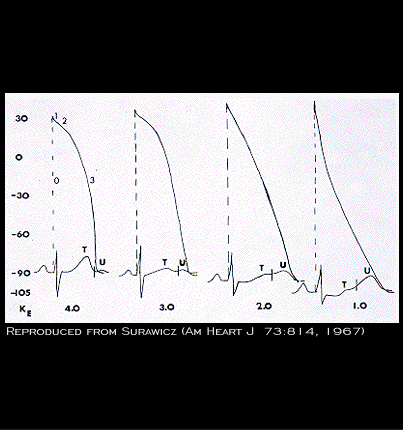
This figure, reproduced (with permission) from the work of Surawicz (Am. Heart J. 73:814.1967), illustrates the correlation between the changes in the ventricular transmembrane action potential and the body surface electrocardiogram as extracellular potassium is decreased in progressive steps from 4.0 to 1.0 mM.
